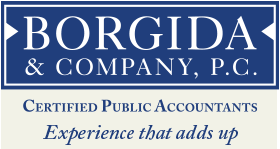 A Roth Conversion is when you take a distribution from an IRA, tax it and rollover the proceeds within 60 days into a Roth IRA. In lieu of getting a check, have the funds sent from the IRA to the Roth IRA in a trustee to trustee transfer. The conversion amount is subject to ordinary income tax in the year of the conversion. This would be subject to federal income tax and any applicable state income tax. Any nondeductible IRA’s would not be included in taxable income upon the conversion.
A Roth Conversion is when you take a distribution from an IRA, tax it and rollover the proceeds within 60 days into a Roth IRA. In lieu of getting a check, have the funds sent from the IRA to the Roth IRA in a trustee to trustee transfer. The conversion amount is subject to ordinary income tax in the year of the conversion. This would be subject to federal income tax and any applicable state income tax. Any nondeductible IRA’s would not be included in taxable income upon the conversion.
It’s important to have additional funds to pay the tax on the conversion from another source. For example, if you wanted to convert $50,000 from your IRA into a Roth IRA, and your income bracket was 25%, you would want to have $12,500 ($50,000 * 25%) of funds available to pay the tax so as the entire $50,000 distributed from your IRA could be converted into the Roth IRA.
By doing a Roth Conversion, you are accelerating the income tax. For some, this is very counter intuitive. The mantra for most taxpayers has been simple, defer income, accelerate deductions and push the tax into futures years. While it may seem strange initially to accelerate the income tax by doing a Roth Conversion, here are 3 Reasons to do a Roth Conversion to save taxes:
1. Lower Income Tax Brackets
The Tax Cuts and Jobs Act (TCJA) cut federal income tax rates. There are now seven federal individual income tax brackets starting at 10% and topping out at 37%. The highest rate affects single taxpayers with taxable income of $510,301 and married filing joint with taxable income of $612,351. Before the tax cut, the highest federal income tax bracket was 39.6%.
The income tax rate cuts are currently set to expire in 2025. What can happen in 2025 with the income tax rates? As Yogi Berra said, “It’s tough to make predictions, especially about the future.” With that said, you still need to form an opinion about income tax rates going forward. The reality is they can go down, stay the same or go up. As income tax rates are near historical lows, what are the odds of them going down in the future? Take a look at the federal deficits and, well, I think you have your answer. Can they stay the same? Sure, anything is possible. I think however the odds are that income tax rates will need to go up in the future. So, investors have a window here to consider a Roth Conversion at potentially lower income tax rates. A Roth Conversion can be a partial Roth Conversion. This means you don’t have to convert the entire amount in one year. You could do a partial Roth Conversion over the next several years.
2. The Creation of Tax- Free Income from the Roth IRA
For distributions to be income tax free from a Roth IRA there are two straight forward requirements:
- The Roth IRA account needs to be open at least for 5 years.
- The individual needs to be over age 59 ½.
Meet those two requirements and all of the distributions are income tax-free. With an IRA the earnings are tax deferred. A Roth IRA that meets these two conditions is income tax-free. Keep in mind as the Roth IRA is made with after tax dollars; you get back your contributions income tax free. One caveat, if the account holder is under 59½ and takes a distribution from a converted Roth IRA that has been opened for 5 years – the earnings on the account will be taxable.
One advantage of the Roth IRA is that it is not subject to the Required Minimum Distribution (RMD) rules that IRA’s are. These RMD rules require taxpayers to take out a certain amount when they turn 70 ½. There is a life expectancy table the IRS uses to determine the annual amounts to be distributed over the owner’s lifetime. Currently, Roth IRA’s are not subject to the RMD rules during the account owners and the surviving spouse’s lifetime, which is a huge benefit to a Roth IRA. This could allow the account to grow tax-free for decades. The Roth IRA is a great wealth transfer tool. Roth IRA’s are subject to the RMD rules for non-spousal beneficiaries, who could be children, grandchildren or other beneficiaries. If the 5 year holding period was met by the original owner then all distributions are still income tax free. See below however for pending legislation to shorten the distribution period for non-spousal beneficiaries.
3. The Pending Legislation to Remove the Stretch IRA
Congress has passed the Setting Every Community up for Retirement Enhancement Act (SECURE ACT). The Senate has passed their version called Retirement Enhancement Savings Act (RESA). The two chambers have not currently agreed on a bill. The President however has indicated he will sign the legislation.
The biggest change in this pending legislation is the removal of the Stretch IRA. This essentially allowed children and grandchildren that inherited IRA’s and Roth IRA’s to stretch the distributions over their lifetime, which potentially allowed the account to grow for decades.
Again, the legislation has not been passed yet, the basic proposal is that IRA’s, Roth IRA’s and 401(k)’s need to be withdrawn by a non-spousal beneficiary (children and grandchildren) in 10 years. This pending legislation can undue a lot of estate planning that has been done and is one of the biggest reasons to consider a Roth Conversion.
There are other proposals in this legislation. Currently taxpayers are not allowed to contribute to an IRA once they turn 70 ½. This legislation will remove this age limitation. If this proposal passes, it will treat contributing to an IRA the same as a Roth IRA. There will be no age limits for either the IRA or Roth IRA. Keep in mind; you need to have earned income to contribute to an IRA or Roth IRA. Earned income is from wages as an employee or earned income from a trade or business. For 2019 taxpayers can contribute up to $6,000 into an IRA or Roth IRA. Taxpayers age 50 and over can make an additional ‘Catch Up’ contribution of $1,000.
As was mentioned above, currently RMD’s must begin when you turn 70 ½. The House Bill will increase this requirement to age 72. The Senate has competing bills to increase this age to 72 and age 75. The increase in the RMD age from 70 ½ to 72 will likely not be very meaningful to many folks as it is only eighteen more months. A change to age 75 could be significant.
ACTION ITEM
Depending on your current income and tax bracket it may make sense to do a Roth Conversion and pay the tax upfront taking advantage of the current lower tax rates.
If you have any questions, please give our office a call. We will be happy to assist you with this analysis.



Does this make sense for someone in their late seventies?
It’s difficult to generalize with tax advice; that being said, this strategy may NOT make sense for someone in their late seventies.